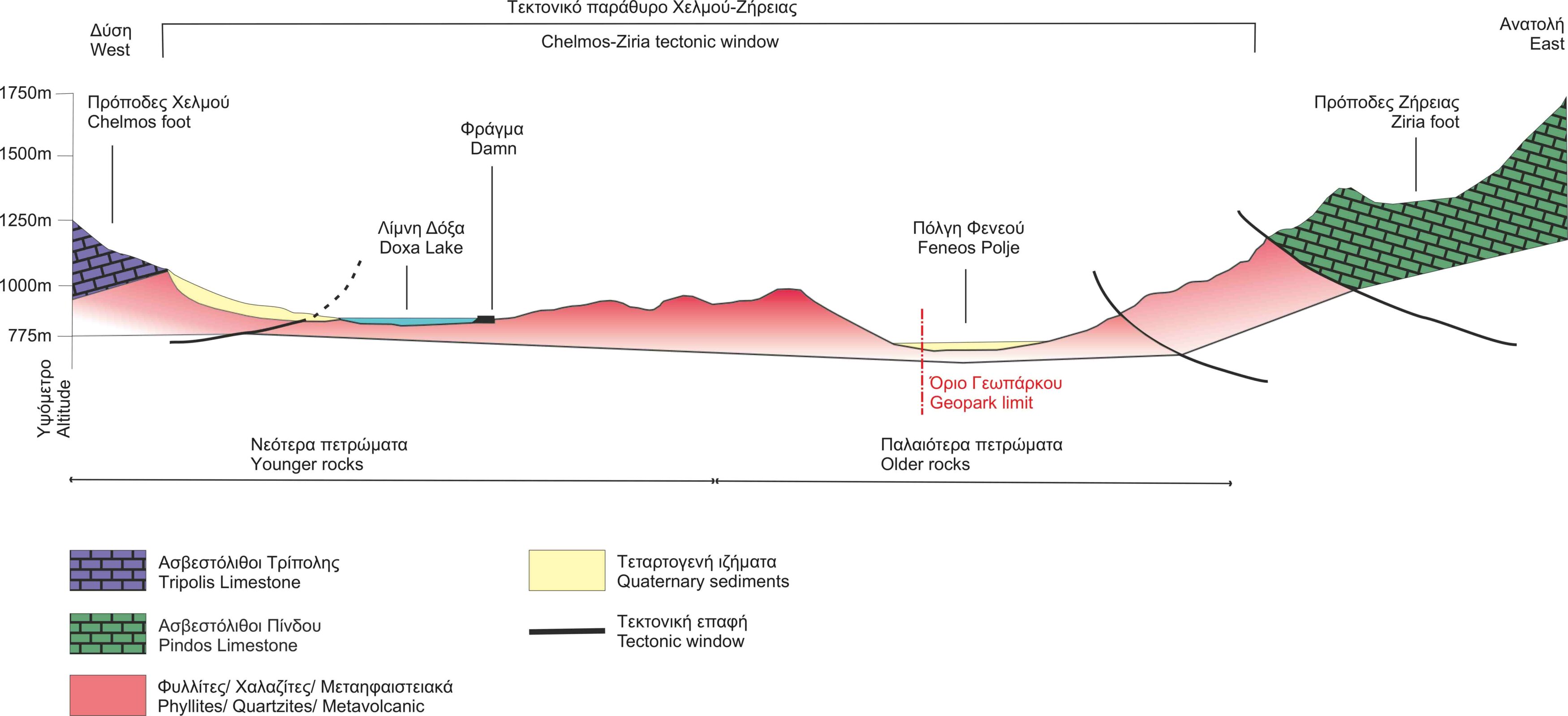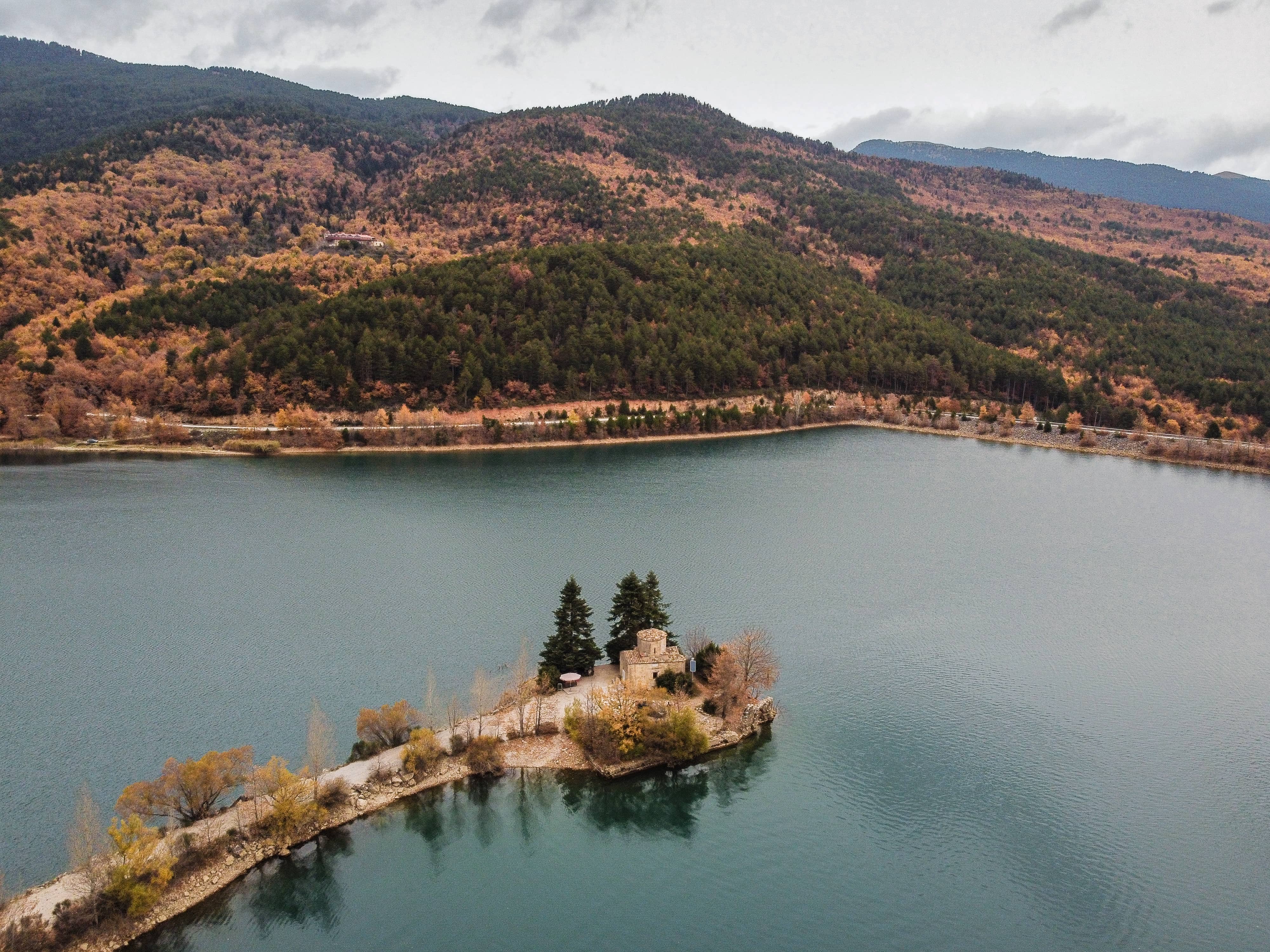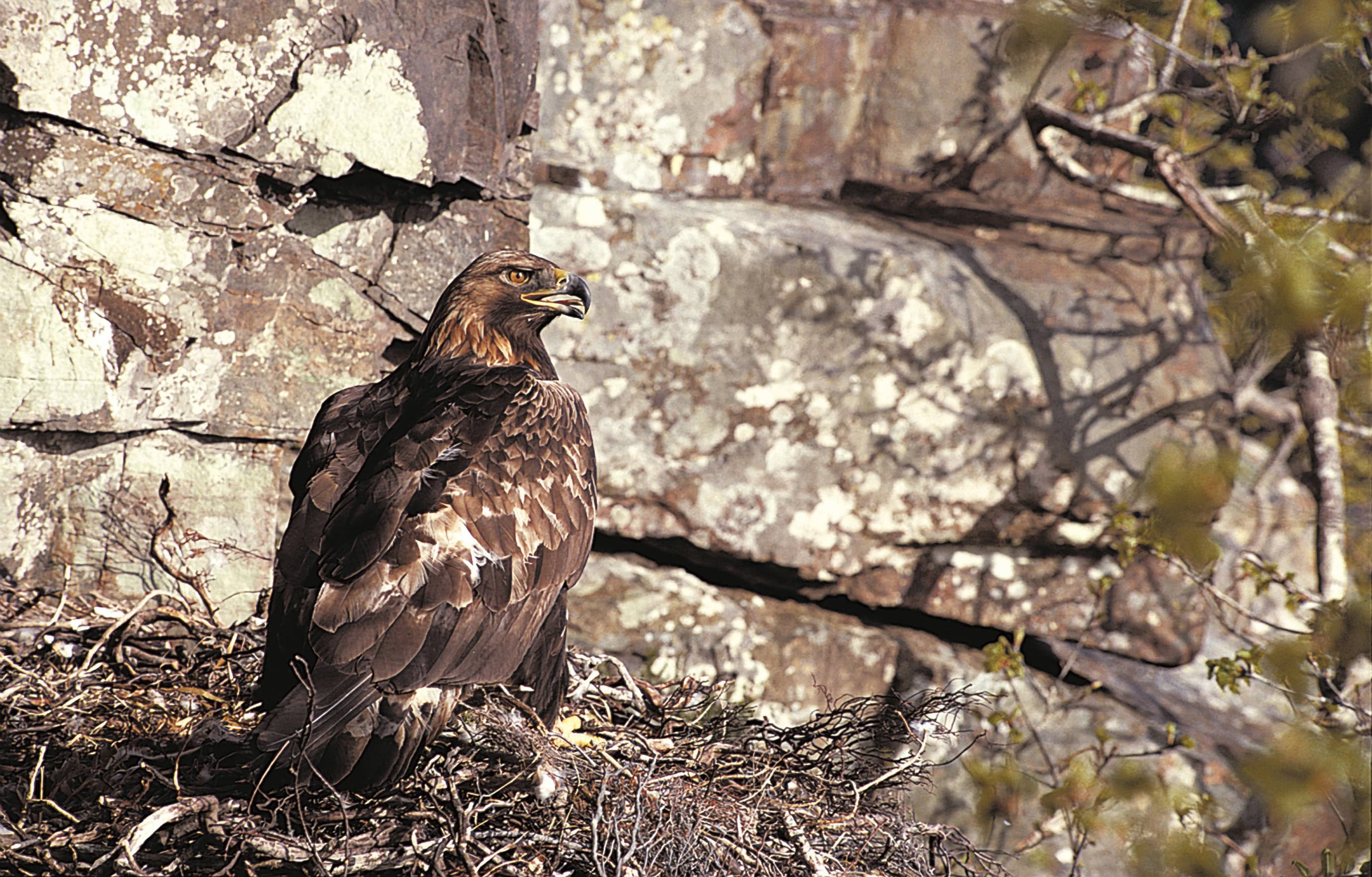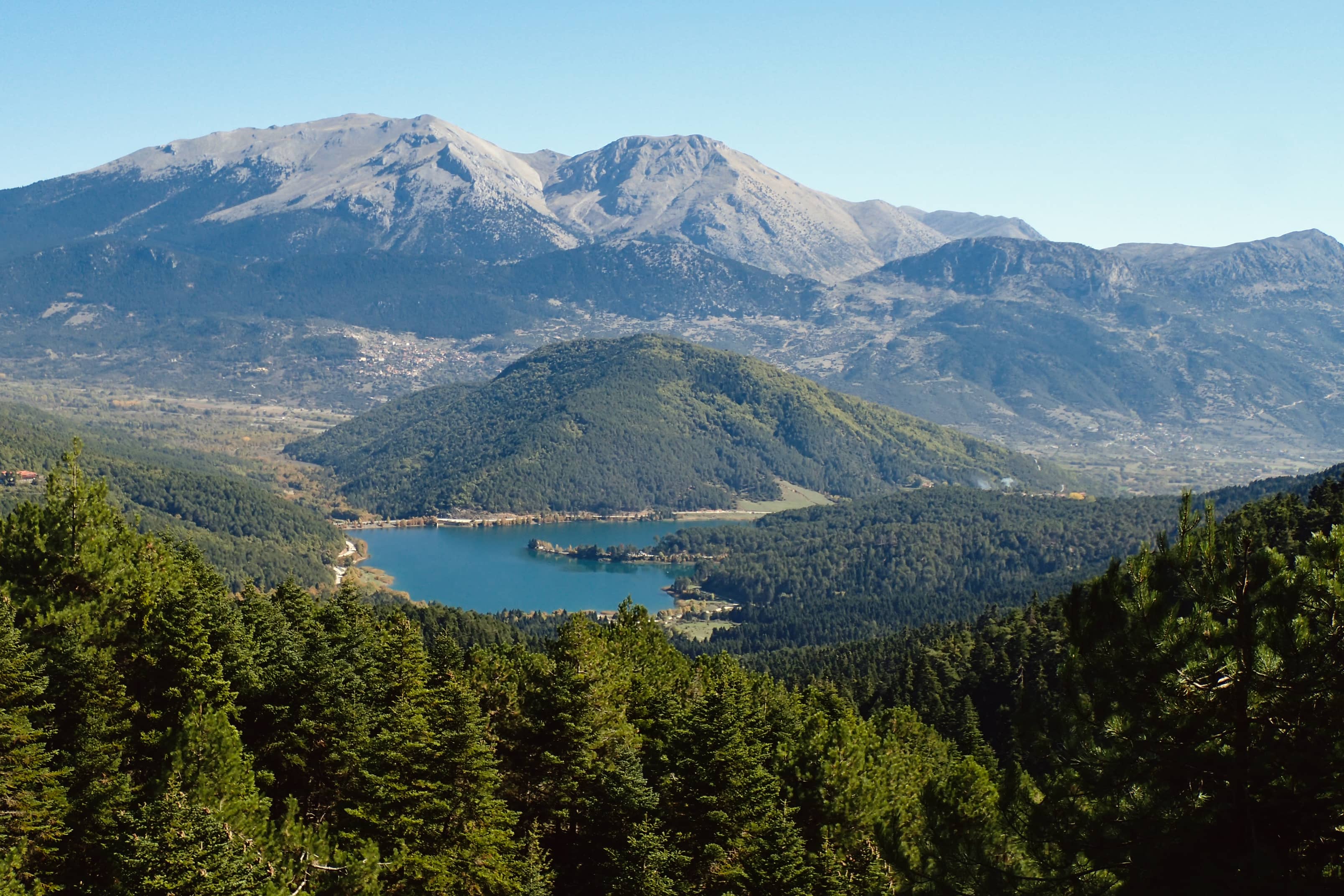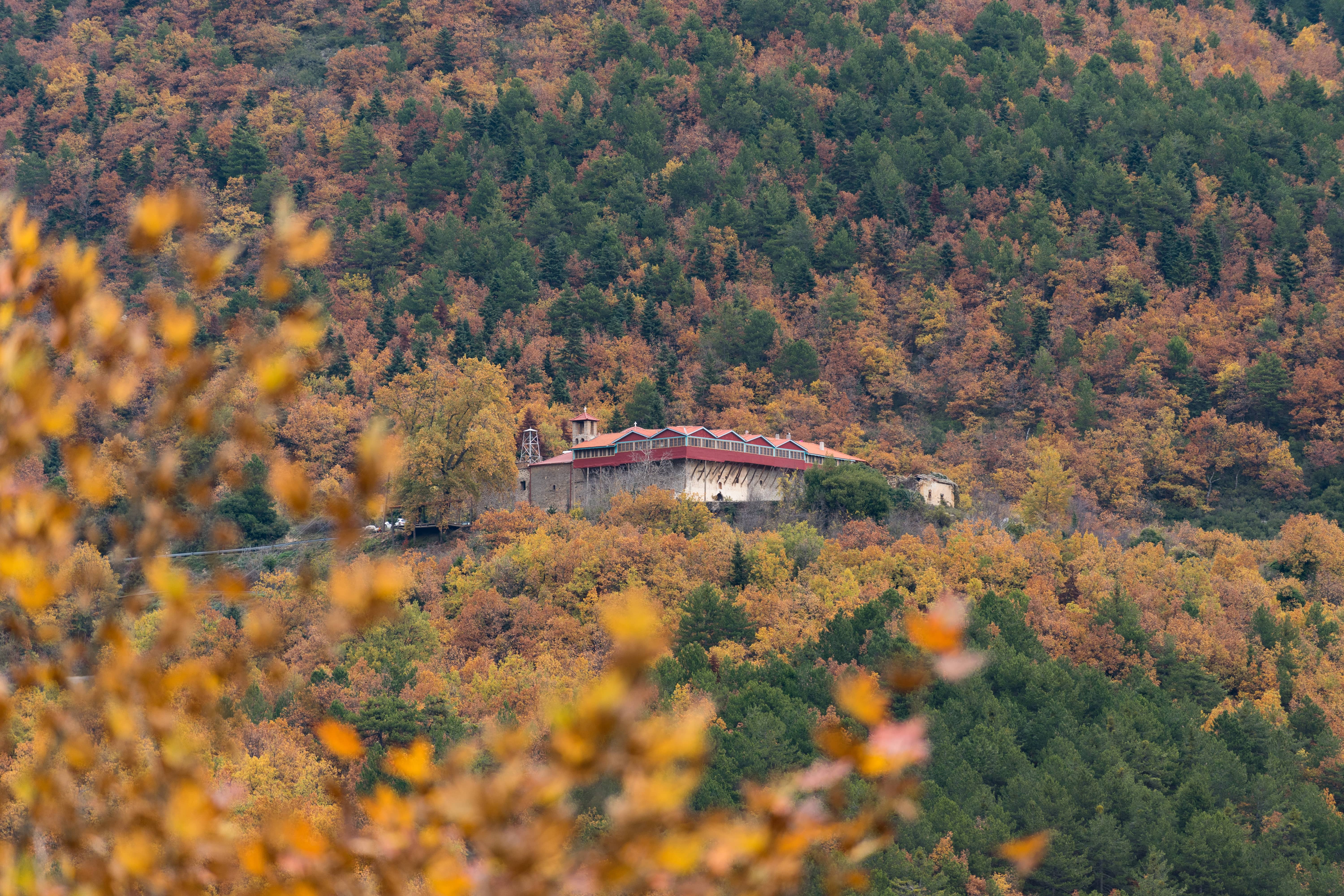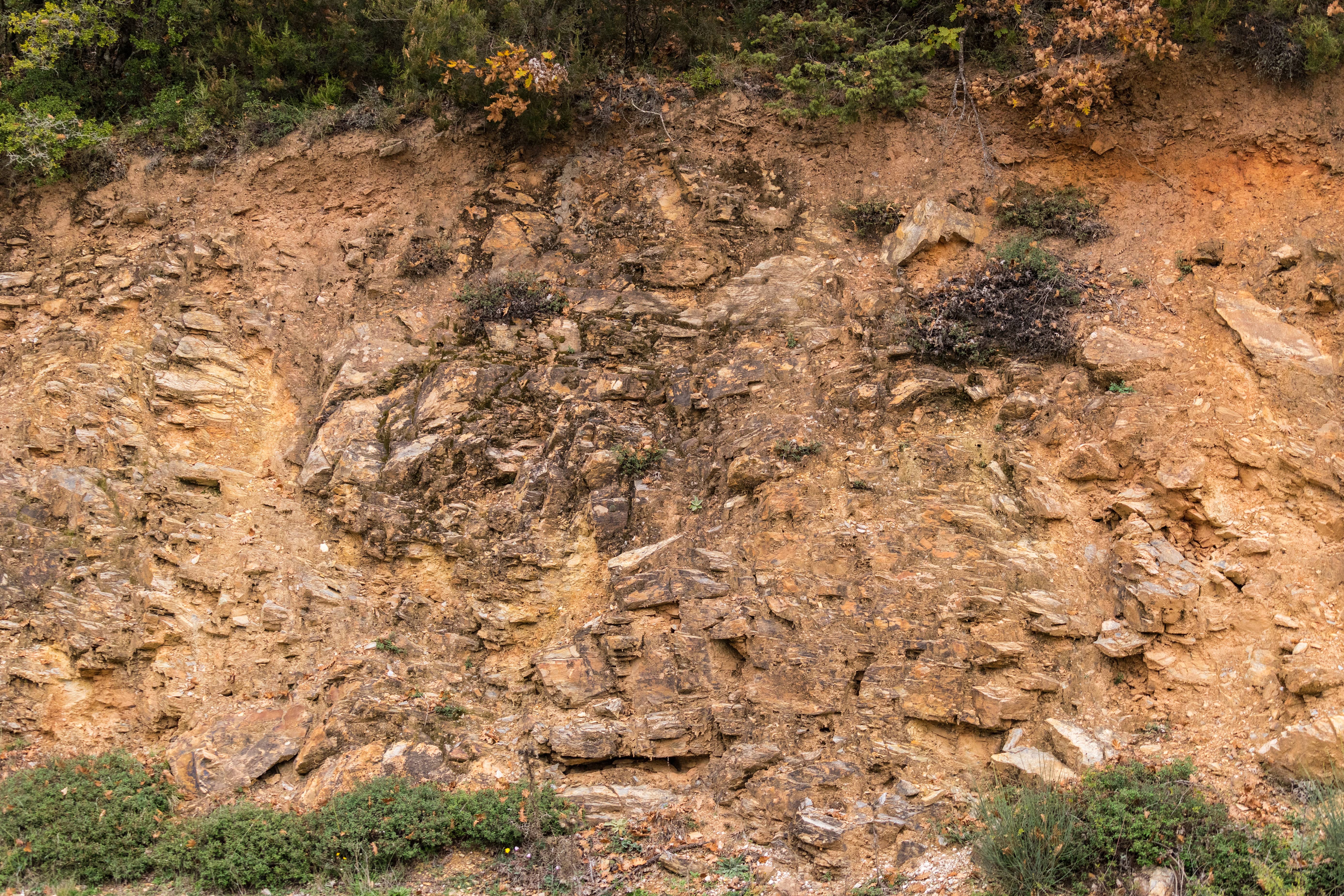THE OLDEST ROCKS OF CHELMOS
Doxa Lake is an artificial lake, a reservoir. It was created due to a dam that was built during the mid-90’s. Lake Doxa lies at 900m and covers 480 acres. In the center of the lake there is a narrow strip of land that ends at the picturesque church of Agios Fanourios, while on the northern slopes stands the historical monastery of St. George.
Geodiversity
538 – 443 million years ago, there was a large super- continent, Gondwana, in which large river systems flowed, providing the material from which phyllites-quartzites were formed. Gondwana then joined other pieces and formed the supercontinent Pangaea. As the lithospheric plates moved, this ancient supercontinent was split in smaller pieces. These pieces were joined with other lithospheric plates. The sedimentation happening there, buried the Gondwana sediments under new ones. As a result of the high pressure and temperature, their internal structure changed (metamorphosis). Now these rocks can be torn into thin sheets. This why they are named phyllites (phyllo=sheet).
Due to the subduction of the African plate underneath the Eurasian one, these rocks were compressed, and thus metamorphosis of the rocks took place, and finally they were uplifted. Due to faults and karstic erosion the younger rocks have been shifted and eroded allowing the study of the older ones (phyllites-quartzites) that lie beneath. This is what geologists call a tectonic window. It is actually a window to the past. These rocks constitute the oldest rocks of the Geopark.
Biodiversity
The Lake is located within the Special Protection Area (SPA) “OROS CHELMOS (AROANIA)-FARANGI VOURAIKOU KAI PERIOCHI KALAVRYTON” (GR2320013) for avifauna and within the Special Area of Conservation (SAC) “OROS CHELMOS KAI YDATA STYGOS” (GR2320002) of the Natura 2000 network. Around the lake there are forests of Kefalonian fir (Abies cephalonica) and black pine (Pinus nigra subsp. nigra). The lake supports a rich avifauna as well, as it is visited by many aquatic birds and shorebirds. The waters have been enriched with carp (Cyprinus carpio), while here lives a Peloponnesian endemic fish species, Pelasgus stymphalicus.

